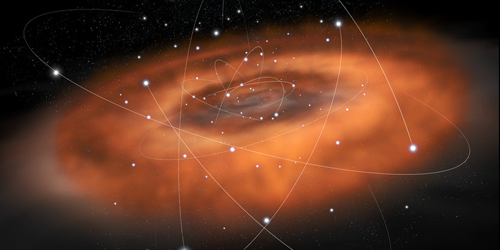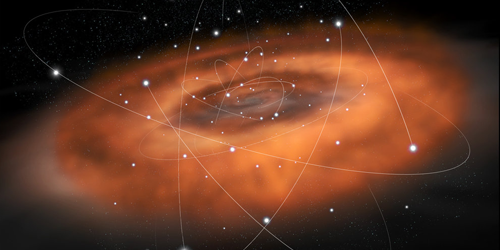Constants Still Constant Near Black Holes
The laws of physics as we know them assume that universal physical constants are exactly that—universal and constant. Yet many alternatives to general relativity suggest that these “constants” are spacetime dependent, with some theories predicting changes under strong gravitational fields. Seeking signs of variation in the fine-structure constant ( 𝛼), Aurelien Hees of SYRTE at the Paris Observatory and colleagues analyzed the spectra of five stars orbiting near the Milky Way’s central supermassive black hole (SMBH). By returning the expected value, the study is the first to constrain 𝛼 close to such a massive object.
The constant 𝛼 defines how charged particles interact through the electromagnetic force and determines electron energy levels in atoms. Any variations in the value of 𝛼 should show up as shifts in the frequency of atomic absorption spectra. To try to spot this signal, Hees and colleagues selected giant stars whose atmospheres exhibit absorption lines from multiple atomic species. They calculated that each of these absorption lines should be affected differently if 𝛼 varies. These differences would make the signature of 𝛼 variations stand out from other shifts unrelated to such variations, like those due to the stars’ motions, which perturb each absorption line in the same way.
The team found that if 𝛼 varies at the stars’ distance from the SMBH, it is by less than 1/10,000th of its established value. This constraint is stronger than that achieved by previous measurements of 𝛼 near white dwarf stars, though those earlier studies probed stronger gravitational fields. Future observations of stars even closer to the SMBH will constrain 𝛼 for even higher fields.
This research is published in Physical Review Letters.
–Marric Stephens
Marric Stephens is a freelance science writer based in Bristol, UK.





